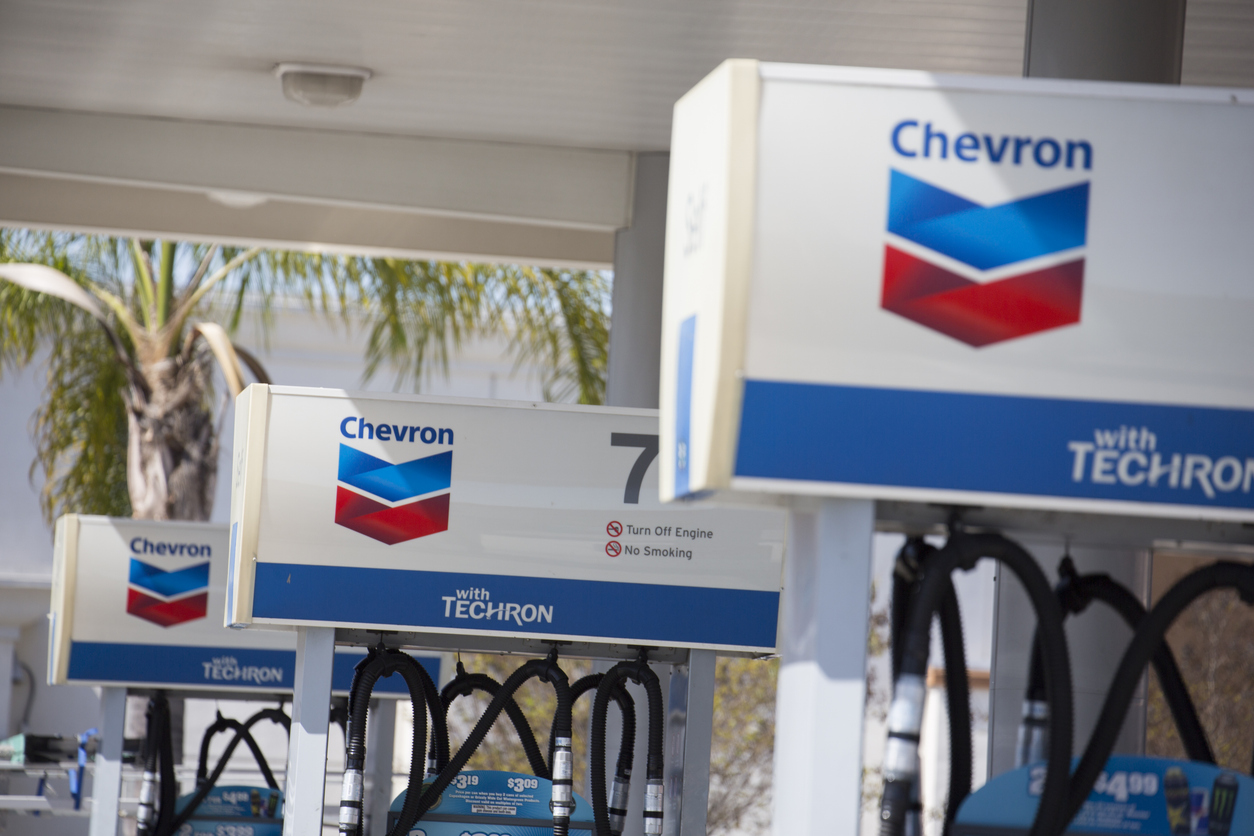Is Chevron Stock Too Cheap With Its 5.1% Yield After Its Recent Dividend Hike?

Chevron Corp. (CVX) pays an annualized dividend per share of $6.84, so at today's price, CVX stock sports a 5.1 %+ annual dividend yield. Is that too cheap, especially since its average over the last 5 years is well below this?
CVX is at $133.28 in midday trading on Monday, April 21, well off a peak of $168.51 on April 1. In a March 4 Barchart article, I argued it was too cheap, and CVX stock rallied. But it's down again, and the same valuation method can be repeated.

Dividend Yield-Based Price Target
On Jan. 21, Chevron announced a 5% increase in its quarterly dividend per share (DPS) to $1.71 (i.e., $6.84 annually), giving new investors a high annualized yield today:
$6.84 DPS / $133.28 price today = 0.0513 = 5.13% annual yield
Moreover, this is well above CVX stock's average annual dividend yield over the last 5 years. For example, here are 3 surveys' calculations of the 5-year yield average:
Yahoo! Finance ……….. 4.39%
Morningstar ………….... 4.19%
Seeking Alpha ………… 4.05%
So, the average of these three surveys is 4.21%. As a result, if we take the annualized DPS and divide it by this average, the target price is almost 22% higher:
$6.84 DPS / 0.0421 = $162.47 target price
$162.47 / $133.28 = 1.219 = +21.9% upside
The point is that over time, given this high dividend per share payment, CVX stock will tend to revert to its average yield. That provides a huge upside to new investors.
Revisions to this Method
Now, there is one criticism of this method that has some validity. For example, the longer CVX trades at this high yield, the mean yield rises, and therefore, the target price drops.
For example, Yahoo! Finance reports that the average yield over the trailing 12 months (TTM) has been 4.73%, and Morningstar's TTM yield is 4.79% (the same TTM yield at Seeking Alpha).
So, using this figure, CVX stock is worth just $142.80, or just 7% higher:
$6.84 / 0.0479 = 1.0714 = +7.14% upside
However, consider this. Chevron has raised its dividend per share (DPS) every year over the last 37 years. It has already paid out one quarterly DPS at the $1.71 DPS rate.
So, going forward, a precise calculation of the dividend yield for a new investor in CVX could expect at least one payment that is about 5% higher, or $1.80 per share. So, the precise DPS over the next 12 months (NTM) would be $1.71 DPS x 3 plus $1.80, or $6.93 DPS.
That implies that the 5-year average yield-based target price is $164.61, and the TTM yield-based price target is $144.68, or $154.66 on average. That is still 16% higher than today's price:
$6.93 NTM DPS / 0.0479 (5-yr avg. yield) = $164.61
$6.93 NTM DPS / 0.0479 (TTM avg. yield) = $144.68
Avg price target = $154.66 = 1.16x = +16.0%
However, there is no way to know when this will happen. One way to play this is to set a lower buy-in target price by selling short out-of-the-money (OTM) puts in nearby expiry periods.
Shorting OTM Puts
For example, the May 23 expiration period shows that the $130.00 strike price has a midpoint premium of $4.78, giving a short-seller a one-month yield of 3.68% (i.e., $4.78/$130.00 = 0.036769 = 3.68%).
Moreover, for more risk-averse investors, the $125.00 strike price still has a high premium of $3.12, giving a short-seller a one-month yield of 2.5%.

The bottom line is that investors can set a lower buy-in price for CVX stock. This is done by shorting near-term expiry out-of-the-money (OTM) puts.
For example, the breakeven price for the $130 short-put play is $125.22 (i.e., $130-4.78), and $121.88 for the $125.00 strike price short-put play. So, on average, doing a mixture of these put plays, the investor can set a breakeven price of $123.55.
That means that even if CVX stock falls to below $125 in the next month, the investor, although potentially having an unrealized capital loss (if CVX drops below $123.55), would make a huge annual dividend yield:
$6.93 NTM DPS / $123.55 breakeven = 0.056 = 5.60% yield
In other words, this is a great way to set a lower buy-in price for new investors in CVX stock. And even if CVX doesn't fall below this breakeven point, the investor is able to collect good investment income over the next month.
The bottom line is that given CVX stock's 5.1% yield now, its next 12-month (NTM) yield of 5.2%, and its higher historical yield targets, CVX looks too cheap. Setting lower buy-in prices by shorting OTM puts is a good way to play the stock now.
On the date of publication, Mark R. Hake, CFA did not have (either directly or indirectly) positions in any of the securities mentioned in this article. All information and data in this article is solely for informational purposes. For more information please view the Barchart Disclosure Policy here.